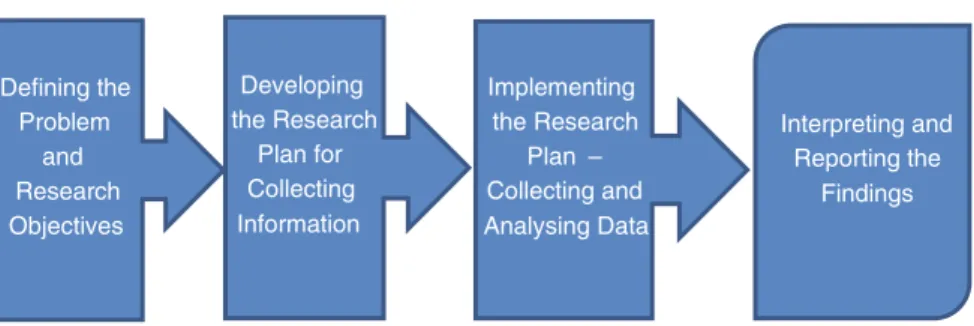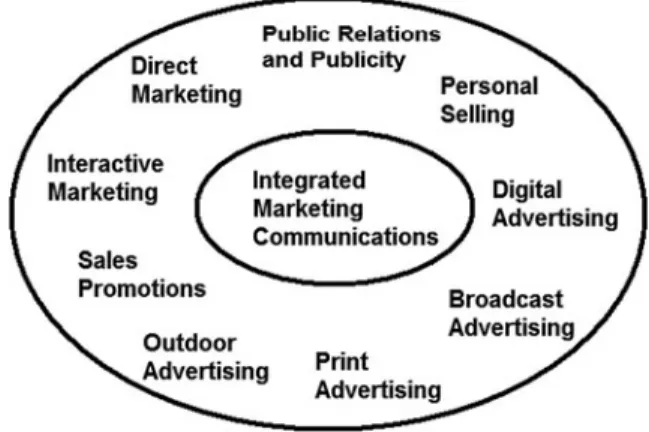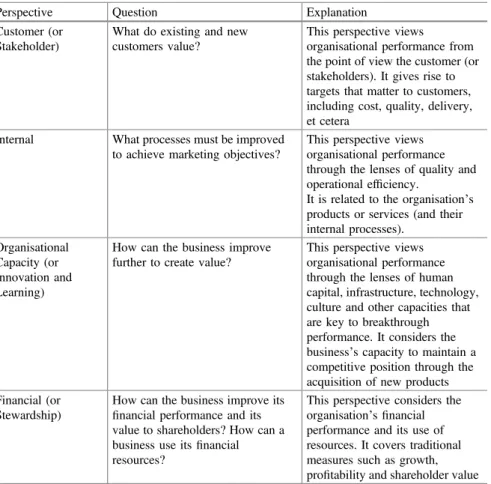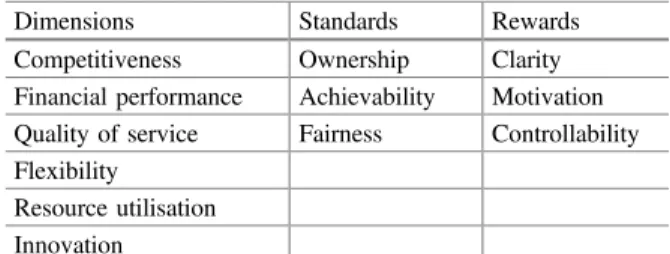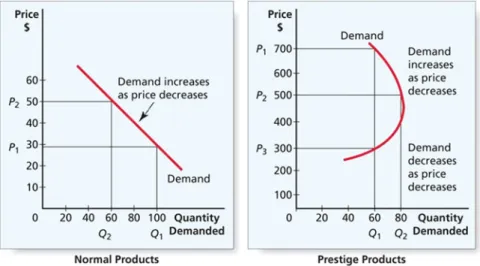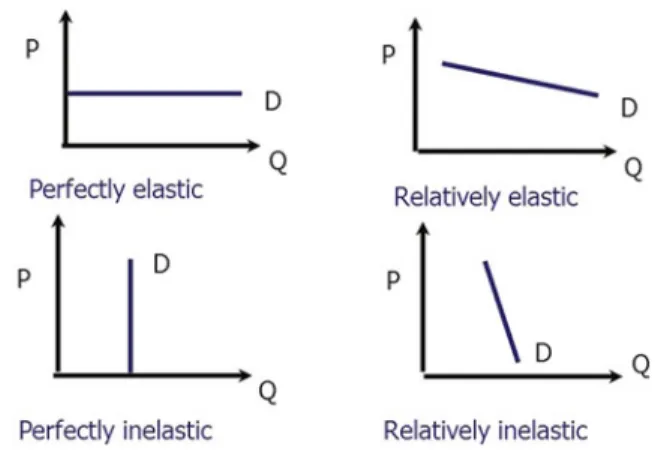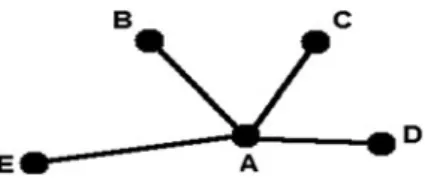It explains the strategic and operational management of the travel, tourism and hospitality industry sectors. The course content of this publication prepares undergraduate students and aspiring managers with a comprehensive exposure to the tourism industry.
Introduction
In this light, this chapter explains how destinations can offer different products to satisfy a wide variety of tourists. Finally, this chapter lists key points of interest in North America to explain how diverse destinations can be attractive to different tourists for many reasons.
De fi ning Tourism
The Nature of Tourism
In general, the purpose of their trip is not to enjoy the sights and facilities of the destination. Business trips are usually organized in a short period of time and for specific and short periods of time; the duration of their journey can often be as short as one day (Swarbrooke & Horner, 2001).
The Ability to Travel
Sharpley (1994) argued that the motivation to travel can be attributed to extrinsic or intrinsic factors. Conversely, the individual's intrinsic motivation to travel may stem from deep-seated, psychological needs, such as self-esteem or a need for companionship.
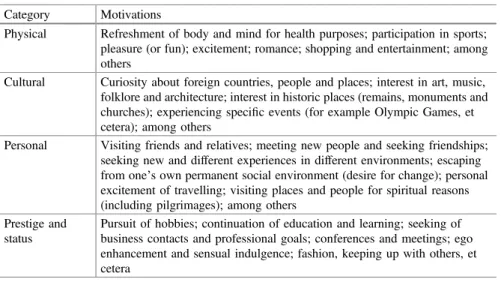
The Tourism Product
Therefore, the need for tourism could have been developed from the individuals' anti-thesis to work.
Transportation
Air Travel
The concept of Low Cost Carriers (LCC) is based on the idea of providing low prices to create demand. Until now, passengers could not combine their low-cost travel arrangements with other legacy airlines' bookings.
Water-Borne Transportation
Cruise and Stay is a combination of a fly cruise and ground arrangement, where the passengers spend some time in one of the ports of call. Educational cruises include special onboard classes and often address a special interest of the passengers.
Land Transportation
Accommodation
- Hotel Brands and the Corporate Chains
- Consortia
- The Bed and Breakfast (B & Bs)
- Farmhouse Accommodation and Agri-Tourism
- Camping and Caravanning
- Second Homes and Time-Share Accommodation
- Educational Accommodation
- The AirBnB Model of Shared Accommodation
Therefore, they should only consider accommodation that is affordable to them (i.e. if it falls within their price range). They can have an intimate relationship with the culture of the country they are visiting.
Ancillary Services
- Tourist Publications and Online Content
- Public Service and Amenities
- Financial Services
- Food and Beverage
- Entertainment
- Retail Facilities
- Education and Training
- Tourist Guides and Courier Services
Local and "near me" searches have changed the travel path to buy with in-destination or "in-the-moment" opportunities. For many travelers, the consumption of food and drink is an important part of the travel experience.
Sales and Distribution
Travel Agency Operations
Travel agents provide specific elements of the tourism product to meet the needs of their customers. Inclusive travel has the following characteristics: travel arrangements are planned in advance; may include transport, accommodation and landscaping;
Tourism Organisations and Their Stakeholders
National Tourism Of fi ces
Contribute to the improvement of the level of human resources in the tourism industry;. Advising the government on the planning and development of the tourism industry and the infrastructure that supports this industry;.
Tourist Destinations
Key Elements of Tourist Destinations
To assist and advise on all tourism-related issues and to undertake activities, events and projects to improve the tourism product (MTTA, 1999). Therefore, a greater variety of attractions of a destination would potentially appeal to a large number of tourists.
Different Types of Destinations
Niagara Falls, with its spectacular rapids of the Niagara River, is located between Lakes Erie and Ontario. With its Capitol building, which is the seat of government, the Lincoln Memorial and the world-famous Smithsonian Institute are some of the city's attractions.
Questions
Bermuda: With its subtropical climate, world-class golf facilities, good beaches and good water sports coverage, this destination offers various levels of accommodation, from luxury hotels to guesthouses.
Summary
Therefore, this chapter introduces its readers to market research as tourism businesses constantly seek information about their customers. The successful research organization entrusted with the market research will collect the data, analyze it and interpret its findings.
Introduction
Abstract Business must understand the needs and wants of their customers if they are to remain successful in a competitive market. The research report will add value to the commissioning business only if marketing managers pay attention to its key recommendations.
The Rationale for Market Research
It is necessary to examine possible competition and to anticipate market developments through market research. Processing and analyzing information obtained through market research gives them a relevant knowledge base on which they can make better decisions about the development of a product or service.
Assessing the Customers ’ Needs and Wants
In the case of business travelers, price is not necessarily high on their list of priorities. According to ACSI, in the past three years, Spirit has consistently ranked last in terms of passenger satisfaction, although the airline has improved in the past year (from 54% in 2015 to 62% in 2016).
The Marketing Research Process
De fi ning the Problem and the Research Objectives
Designing the Research Plan
- Market Research Techniques
- Sampling
- Probability or Random Samples
- Non-Probability Samples
The meaning of the questions asked should elicit specific information that the researchers are seeking. The first step in drawing a random sample is to make a list of all the members of the population.
Research — Whose Job Is It?
Preparing a Brief
The company commissioning the survey should consider a list of specialist agencies that may be appropriate for them. Once a research organization has been chosen, the company must provide a briefing to the research organization, which should include: the business and research objectives; suggestions on how to collect market and consumer data; the type of research being considered (by clearly stating industry expectations of this project); question areas to be addressed during the research; a realistic timetable; and a budget, as shown in table 2.2.
The Research Agency ’ s Proposal
Type of research envisaged: The agency must be informed about what kind of research the company needs. Budget: The agency should know how much money the company has in the research budget.
Implementation of the Research Plan
Data Analysis
Preparation and Presentation of a Research Report
Thus, the limitations of the research should be noted in the report, along with reasonable explanations of potential weaknesses of the research methodologies, sampling frames, and analytical techniques that were used in the study. Furthermore, the research report will only be valuable to the commissioning business if marketing managers make good use of its key findings and recommendations.
Questions
Summary
Summary The tourism marketing environment consists of internal and external forces that can affect the performance of organizations. Therefore, this chapter explains the external environmental factors, including; political, economic, social and technological influences.
Introduction
Obviously, competition is a vitally important element in the marketing environment and should not be underestimated. For these reasons, organizations must have effective mechanisms to monitor the latest developments in the marketing environment.
Environmental Scanning
The Macro Environment
- Political, Legal and Regulatory Issues
- The Economic Issues
- Social Issues
- Technological Issues
If he leaves office, will there be any drastic changes in the economic policies of the new government. Tourism businesses are expected to be increasingly knowledgeable and skilled in the use of the Internet (Buhalis & Law, 2008).
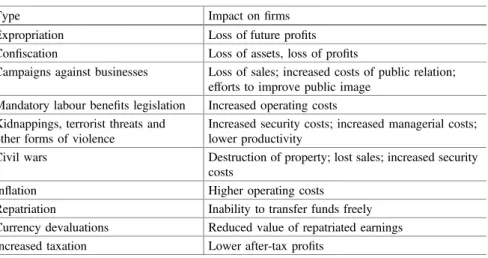
Micro Environment
- Capital Structure
- Resources
- Capabilities
- Company Aims and Objectives
- Marketing Intermediaries
Some innovative destination management organizations (DMOs) are using a range of smart technologies to improve their levels of customer service. For example, the KTO Tourist Information Center (TIC) of Seoul, South Korea, has adopted a mix of information, communication technologies (ICT), including a website for visitors with an interactive map containing pre-arrival information.
Identifying Competition
Analysing Competition
Legacy carriers had to compete in turbulent markets, as LCCs have disrupted many markets. According to KPMG, these initiatives have reduced legacy carriers' cost disadvantages over low-cost airlines by more than a third.
Questions
Some of the legacy airlines even charge their passengers for seat reservations and seat allocations. The service offered by both low-cost and legacy service providers is becoming more or less the same.
Summary
Introduction
The target marketing strategy differs from mass marketing (where a company may decide to produce one product and distribute it to all consumers) or from product differentiation (where a company offers a variety of products to a large market). Marketers have moved away from mass marketing efforts as they increasingly target smaller segments with customized marketing programs.
The Market Segment
Market Segmentation
- The Bene fi ts of Segmentation
Temporary travelers, these include business travelers who combine personal travel with a business trip;. This enables them to personalize or 'tailor' the company's marketing activities more precisely and responsively to the preferences of individual customers.
Segmentation Variables
- Demographic Segmentation
- Geographic Segmentation
- Psychographic Segmentation
- Behavioural Segmentation
- Product-Related Segmentation
For example, the age range for business travelers can typically range from late twenties to mid-fifties. Today, business travelers can include businessmen who travel to different countries in the world, including developing countries, where there are growth prospects.
The Requirements for Effective Segmentation
- Measurability
- Substantiality
- Accessibility
- Actionability
The length of travel journeys can also dictate customer needs, wants and expectations. However, although it may be possible to develop products to satisfy the needs of business traveler segments, it will be quite difficult for the airline to identify the ultimate psychographic segment.
Market Targeting
- An Undifferentiated Marketing Strategy
- A Differentiated Marketing Strategy
- Concentrated Marketing
For example, independent business travelers may have different needs and wants than corporate business travelers sponsored by their employers; For example, if competing airlines successfully apply segmentation techniques; it probably wouldn't make good business sense to employ an undifferentiated marketing strategy.
For example, airlines may offer chartered or scheduled service, low-cost or full-service, long-haul or short-haul services, business or leisure services, and so on;. For example, Deloitte Consulting developed a mobile application that enabled Delta Air Lines' executives to quickly inquire about the airline's operations.
Targeted Segmentation Through Mobile Devices
In addition, many companies commonly use applications, including browser cookies, that track consumers through their mobile devices as they move around. There are also tourism companies that personalize their offers when they collect, classify and use large amounts of data about consumer behavior.
Product Positioning
Such data points are predicted to only increase as the multi-billion dollar advertising monopolies are built on big data and analytics that can help businesses personalize immersive ads to target individual customers. The use of credit card transactions also complements geo-targeting and Google Maps, with advertising; as the physical purchases increasingly require personalization, fulfillment and convenience.
Questions
They can be positioned for their high service standards, extra amenities and so on. Alternatively, low-cost carriers such as Southwest Airlines can position themselves as a punctual airline, as a no-frills airline, as a low-cost airline, as a safety-conscious airline, as a friendly airline and as a serving airline. the western part of the US
Summary
Tourism businesses must differentiate themselves from their rivals if they decide to position themselves alongside competitors, or position themselves in untapped locations. Therefore, an integrated marketing communication (IMC) strategy consisting of a combination of promotional tools can be an essential element of the overall marketing strategy of businesses.
Introduction
Different promotional tools can promote greater awareness of a company's products or services, inform people about features and benefits, and move them to make a purchase. Finally, it suggests that the marketing managers should consider the 6Ms (including the market, the mission, the message, the media, money and measurement) when setting up an IMC plan.
Selecting the Right Communication Vehicles
Advertising
- The Advertising Campaigns
- Outsourcing Marketing Communications to an
- Evaluating Advertising Success
This method assumes that the advertising budget should be related to the objectives of the organization and its advertising goals. The task and investment method is the best method to calculate the advertising budget as it is based on the return on investment principle.
Public Relations and Publicity
- Reviews and Ratings
Public relations and advertising support other marketing tools and can be seen as the backbone of the campaign mix. Although it is not always easy to verify the authenticity of user-generated content, the digital platform should have quality control mechanisms and processes to ensure that their reviews are clear, accurate and truthful, for the benefit of the service providers as well as potential consumers.
Sales Promotions
Digital platforms that include ratings and reviews for their products and services must ensure the accuracy, reliability and credibility of their content. Online platforms should take all reasonable steps to ensure that individual reviews reflect the actual opinions, findings and experiences of users.
Personal Selling
- Evaluating Sales Representatives
Once the front desk staff understands the complaint, they need to empathize with the customers and assure them that something will be done to resolve the matter. The goal of this process is to show customers that the company cares about them.
Direct Marketing
While advertising consists of non-personal communications, direct marketing seeks to establish personal one-on-one relationships with customers. Direct marketing is attractive to many marketers because it is a communication tool that provides a direct response from customers.
Interactive Marketing
Tourism organization websites use social media networks as well as interactive communication to enable tourists to personalize their websites with their experiences. Due to their important role in facilitating travelers' access to online tourism domains, social media have become an important interactive tool for potential tourists searching for travel information.
Planning the Integrated Marketing Communications
- The Market
- The Mission
- The Message
- The Media
- The Money
- Measurement
An overview of the marketplace, competition, environmental factors (as they relate to IMC issues) and. Integrated Marketing Communications Program Marketing tools include: Advertising, direct marketing, interactive marketing, sales promotion, public relations and personal selling (if applicable).
Questions
Summary
When choosing communication vehicles, it is necessary to take into account where potential buyers are in the purchasing process. This is followed by a discussion of the role of digital media in the distribution chain, as tourism companies increasingly sell directly to customers over the Internet via websites and travel search engines.
Introduction
In this light, this chapter describes traditional and contemporary travel distribution channels as it raises awareness of the potential of new distribution technologies. Finally, this chapter anticipates the future for the distribution of travel and tourism products.
The Distributive Chain
Air Travel Distribution
Today, online travel agencies and independent travelers can compare airline prices in a few clicks.
Computer Reservation Systems
- Global Distribution Systems
Both the European Civil Aviation Councils and the European Community (i.e. the European Union) have developed codes of practice for the operation of CRS. These tourism companies benefit from the GDS networks as they had lower marginal costs compared to the airlines' distribution costs.
Online Sales via Websites
- Elements of Travel Websites
- Travel Search Engines
If their customer experience of their online purchase involves an unnecessary effort to check out from the website; they can. They can also let you know if there are cheaper flights, especially if there are airports nearby.
Latest Advances in Travel Distribution
The Future of Travel Distribution
The travel companies will have to embrace new technologies and flexible distribution processes; as obsolete distribution components will be replaced. However, many service providers will use their direct channels to reach their targeted customers.
Questions
Summary
Therefore, marketing strategies and plans must be based on appropriate frameworks that create and capture value for customers and companies themselves. Scanning the marketing environment guides management to select specific customer and product strategies.
Introduction
Abstract The central role of marketing stems from identifying the processes that create value for customers. Strategic planning includes a thorough analysis of the businesses' internal strengths and weaknesses, and an assessment of market opportunities and threats.
Strategic Planning
Companies are increasingly shortening their planning horizons as they may face contingent problems from the external environment. However, there were companies that lagged behind as they were not quick enough to realize the importance of this disruptive innovation.
The Strategic Plans
Implement long-term plan in the form of annual budget Measure actual results and compare with the plan. The information about actual results is fed back to the relevant management and is often in the form of reports.
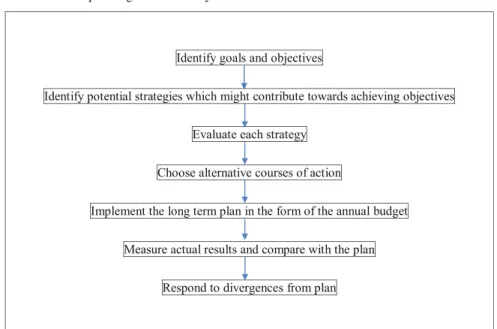
Marketing Plans
The market holder must get a clear picture of the market and the company's position on it. The promotional mix is one of the components of the marketing mix, otherwise known as the 4Ps.
Performance Measurement
- Non-Financial Performance Indicators
Each element of the marketing strategy should now be elaborated in a separate section, which should answer each of the following questions: What will be done. There is no point in an organization devoting resources to market share measurement if increasing market share is not one of the organization's objectives.
The Balanced Score Card Approach
Service quality is usually measured by qualitative metrics, although some quantitative metrics are also used. Market research information on customer preferences with specific products, a number of customer complaints as a percentage of total sales volume, average time to deal with customer inquiries, new customer accounts opened and repeat business from existing customers, among others.
The Building Blocks Model
For example: competitiveness can be measured through relative market share; financial performance can be measured by profit margin; service quality can be determined by product reliability; the delivery time of a product can be considered as a measure of inflexibility; a metric for productivity is the utilization of a resource, and; the degree of innovation could be ascertained by new product developments. However, a high level of innovation provides an indication of how profit, cash flow and market share will move in the future.
The Performance Pyramid
Those on the right are focused on the internal efficiency of the organization; which and is predominantly financial. One of the disadvantages of the performance pyramid is that it focuses on two groups of stakeholders, i.e.
The Marketing Effectiveness Audit
- The Customer Philosophy
- An Integrated and Effective Organisation
- Adequate Information
- Strategic Orientation
- Ef fi cient Operations
The left side of the pyramid contains metrics that have an external focus and are predominantly non-financial. An analysis of the marketing performance should be carried out to determine whether performance targets have been achieved.
Questions
Summary
Yield management can be defined as: "the process of coordinating demand and supply to earn the maximum income on any given year". Although many airlines may use specific systems, this process will usually involve the following steps: a) Aircraft in the airline's fleet are assigned one by one to specific routes throughout the day;.
Tourism Economics
Introduction
In general, when price falls, quantity demanded increases, and when price rises, quantity demanded falls.
Determining Demand
However, when performing this process, it is important to remember that other elements of the marketing mix must remain constant. An improvement in these areas could lead to a shift in the demand curve from D1 to D2, as shown in Figure 8-2.
Elastic Demand
The demand curve for leisure travelers, a price-sensitive segment of the market, is an example of elastic demand. When the price increases, the demand decreases, and when the price decreases, the demand increases.
Inelastic Demand
This means that an increase in price will decrease revenue and a decrease in price will increase total revenue.
Airline Demand
- Direct Attitude Survey
- A Historical Analysis of Passenger Yields
- Market Test
- Conjecture
This analysis could take the form of a cross-sectional analysis of the relationship between price and demand. Market testing also alerts competition to the airline's intent, allowing them to follow such initiatives.
Pricing Methods and Strategies
- Prestige Pricing (or Price Skimming)
- Penetration Pricing
- Cost-Based Pricing
- Volume Pricing
- Differential Pricing
- Uniform Pricing
The break-even point is reached at the point where the total revenue curve meets the total cost curve. The point where the total cost line intersects the sales line (i.e. total revenue line) is the break-even point.
Revenue Dilution
Very often many airlines use differential pricing strategies as they offer different prices to different customer bases according to their needs and wants. The full-service companies can usually charge very high prices to the business travelers and give cheaper prices to the price-sensitive leisure passengers.
Price Determinants
- Organisational and Marketing Objectives
- Pricing Objectives
- Cost Levels
- Other Marketing Mix Variables
- Market Demand
- Competition
- Legal and Regulatory Issues
Certain leisure markets may be more price sensitive than others, as they may exhibit higher levels of price elasticity. An increase in price may be necessary if the business faces controllable or uncontrollable costs.
Questions
Although the airline industry has experienced deregulation and liberalization in recent decades, there is still some government interference in certain areas. For example, liberalization has changed the tariff regime in the United States of America, in the European Union and in many other places.
Summary
Therefore, the purpose of price and revenue management is to stimulate demand from different customers to earn the maximum revenue from it. This essentially involves maximizing revenue from a combination of high-yield and price-sensitive customers; as these systems are intended to reduce seat damage and increase load factors; thereby filling excess capacity.
Introduction
The essence of this discipline is to understand customers' perception of value and to precisely adapt the right products to each customer segment. Therefore, this chapter proposes that revenue management systems combine data mining and operational research with strategy.
De fi ning Yield Management
Differential Pricing
Fare (Seat) Mix Management
Non-Pricing Strategies
- Airline Overbooking
Usually, airline flights have a specific number of seats assigned to each fare or class of service. Both denied boarding and no-shows will cause significant financial losses to the airlines concerned.
Integrating Yield Management
Even so, airline overbooking can increase the risk of denied boarding; which can damage the airlines' image and reputation. From a financial perspective, the airline will improve its operations if the number of broken seats is reduced and the risk of denied boarding is minimized.
Customer-Centric Yield Management
- The Business Passengers ’ Requirements
- The Leisure Passengers ’ Requirements
Unlike business passengers, who usually book very close to the departure date; leisure passengers can book well in advance. In this case, departure time and date may be considered less important factors for leisure passengers.
Revenue Management Mechanisms
The price, revenue and revenue managers must ensure that the expectations of these passengers are always met. The booking pattern of leisure passengers is completely different from that of business passengers.
The Essential Criteria for Successful Yield Management
- Personnel
- Data-Driven Systems
Reservation systems are used by yield controllers to load the schedule with specific seat assignments for the entire season and for daily changes in the airline's inventory. v) Culture: Different departments of the organization must support yield managers. Effective collaboration between departments would help the airline improve the overall customer experience with the airline.
Questions
This is important information about past flights, including; no-show and go-show; iv) Reservation System: An airline's reservation system will usually maintain an inventory of future flights as well as reservation data of past routes. An organizational culture that fosters a collaborative environment among staff members would enhance performance management objectives.
Summary
Long-haul passengers may have certain needs that are higher on their list of priorities than those of the short-haul passengers (some aspects of these needs and wants have been discussed previously in Chapter 3: The Marketing Environment). It is the hallmark of the overall airline product that customers associate with the airline.
The Airline Product
Introduction
Typically, airline products include full-service carriers offering different classes of service, low-cost carriers (LCCs), inclusive tour packages, connecting services, stopovers, fly/drive, fly/cruise, incentive packages, charters, and so on. This can possibly be achieved if the airlines adopt a total quality mantra to improve their service quality, for the benefit of customers.
Aspects of the Airline Product
- Short-Haul Passengers
- Long-Haul Passengers
- The Business Travel Market
- Frequent Flyer Programmes
- The Leisure Travel Market
At times, the development of frequent flyer programs has proven to be a major influence on passengers' choice of full-service airlines. Their airfare is only part of the total cost of the holiday (or vacation).
Customer Service
- Customer Service at the Point of Sale
- Online Engagement with Customers
- Customer Service at the Airport
- In fl ight Services
- Post-Flight Services
That is why it is of the utmost importance that the airlines' service is as efficient as possible. Once the plane has taken off, the customer service is under the direct control of the airlines.
The Total Quality Concept
As the market becomes more competitive, the service aspect of the airline's product becomes more important. The most successful airlines of the future will be those that offer a total quality customer-centric product.
Questions
The total quality concept can also involve all employees being aware of conditional procedures. For example, the passenger handling employees can be proactive in their customer service by providing lunch vouchers if the flight is delayed.
Summary
Employees are expected to participate in all aspects of the airline to improve product and service quality for the benefit of customers. Customer service covers all the product functions, including; customer service at the point of sale; engagement with customers through digital media;.
Introduction
The main reason for the short-term nature of the timetable is the unpredictable economic environment in which airlines operate. Therefore, this chapter provides an introduction to the scheduling process as it describes the conflicting objectives including; customer satisfaction, human resource productivity, high aircraft utilization, high load factors, high frequency, maximization of connections and consistent time.
Corporate Plan and Schedules Plan
Scheduling Objectives
- Satisfy the Customer
- Productivity of Human Resources
- High Aircraft Utilisation
- High Load Factors
- High Frequency
- Maximisation of Connections
- Consistent Timings
The schedule planners job is to prepare schedules that will maximize aircraft utilization for their route network. The schedule planners are expected to maintain a balance between high load factors and high frequency.
The Schedules Planning Process
The consistency of the airline's latest schedule catalog will help them build familiarity and loyalty among their consumer base (Wu, 2005). Sometimes it can be difficult for airlines to maintain such consistency due to certain schedule restrictions (we will discuss these restrictions shortly).
Scheduling Constraints
- Slot Problems
- Night Curfews
- Industry Regulation
- Pool Agreements/Joint Venture Agreements
- Peak Surcharges
- Maintenance Requirements
- Standby Arrangements
- General Operational Requirements
Schedule planners must strike a balance between the airline's need to operate as economically as possible and their goal to secure their schedule. As a result, around the same time that the integration map is distributed within the airline's operational areas, a draft timetable is also prepared and distributed in the airline's commercial areas.
Different Routing Patterns
- The Hub and Spoke System
- The Triangular System
- The Linear System
It is, however, possible for the airline to add six new (one-stop) city pairs to its route network. For this reason, it may be necessary for the airline to combine two or more points on one service.
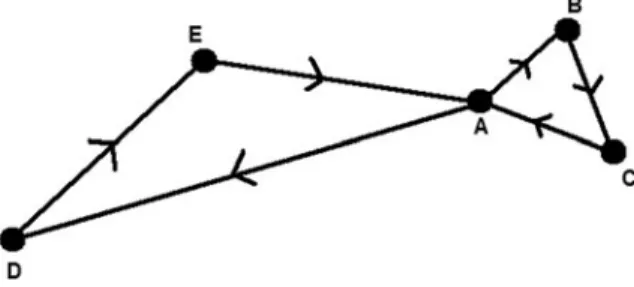
Questions
Summary
Introduction
The Airlines ’ Cost Structure
The Direct Operating Costs (DOCs)
- Fuel and Oil
- Maintenance Costs
- Landing Fees
- En-Route (Including Navigation) Fees
- Handling Fees
- Crew Expenses
- Passenger and Cargo Commission
- Airport Load Fees
- In fl ight Catering
- General Passenger Related Costs
Indirect Operating Costs
- Aircraft Standing Charges
- Flight Crew Pay
- Cabin Crew Pay
- Maintenance Labour (In-House Labour)
- Handling Costs at Base Stations
Overheads
The Effects of the Airline Environment on Aircraft Operating
- Sector Length
- Utilisation
- Fleet Size
- Labour Costs
Effect of Aircraft Design Characteristics
- Vehicle Ef fi ciency
- Crew Complement
- Engine Number
- Aircraft Size
- Aircraft Speed
- Age of Aircraft
Cost Comparison Parameters and Pro fi tability Analysis
- Cost Per Aircraft Kilometre, Seat Kilometre
- The Load Factor
- The Break-Even Load Factor
- Pro fi tability and the Break-Even Load Factor
Questions
Summary
